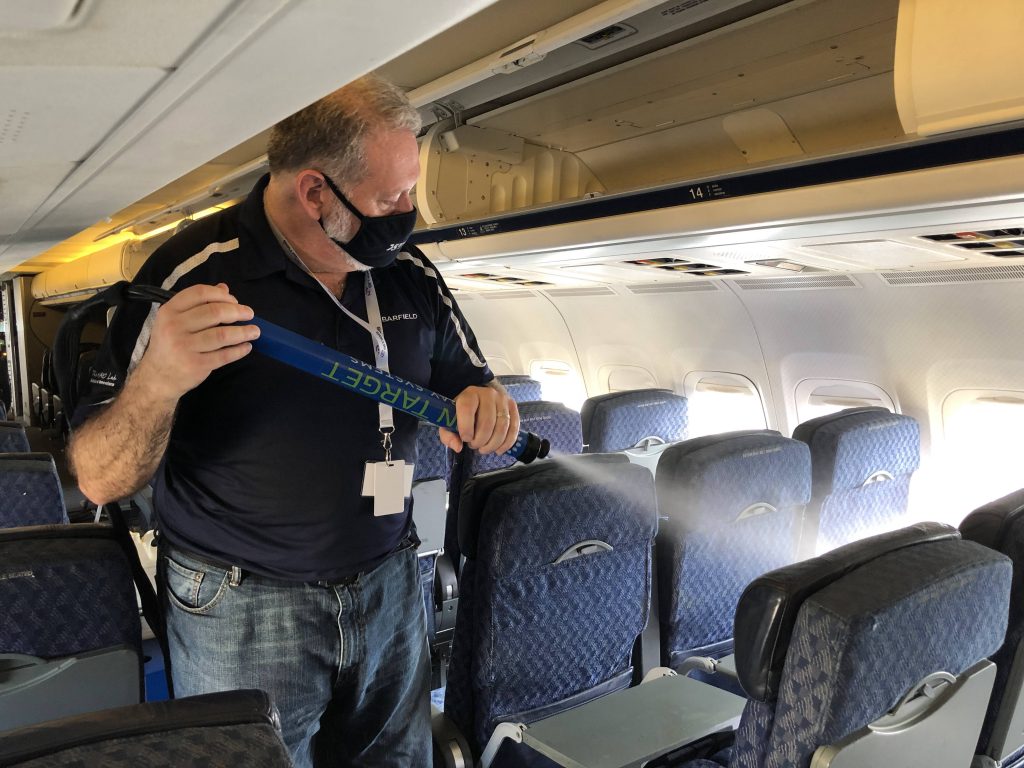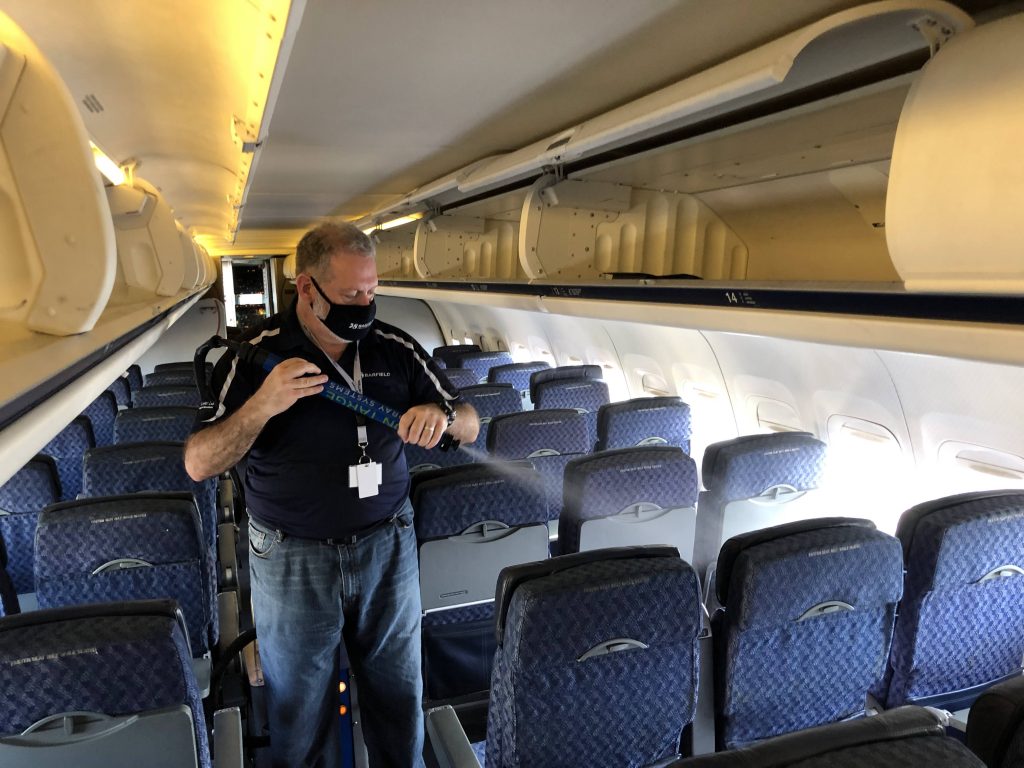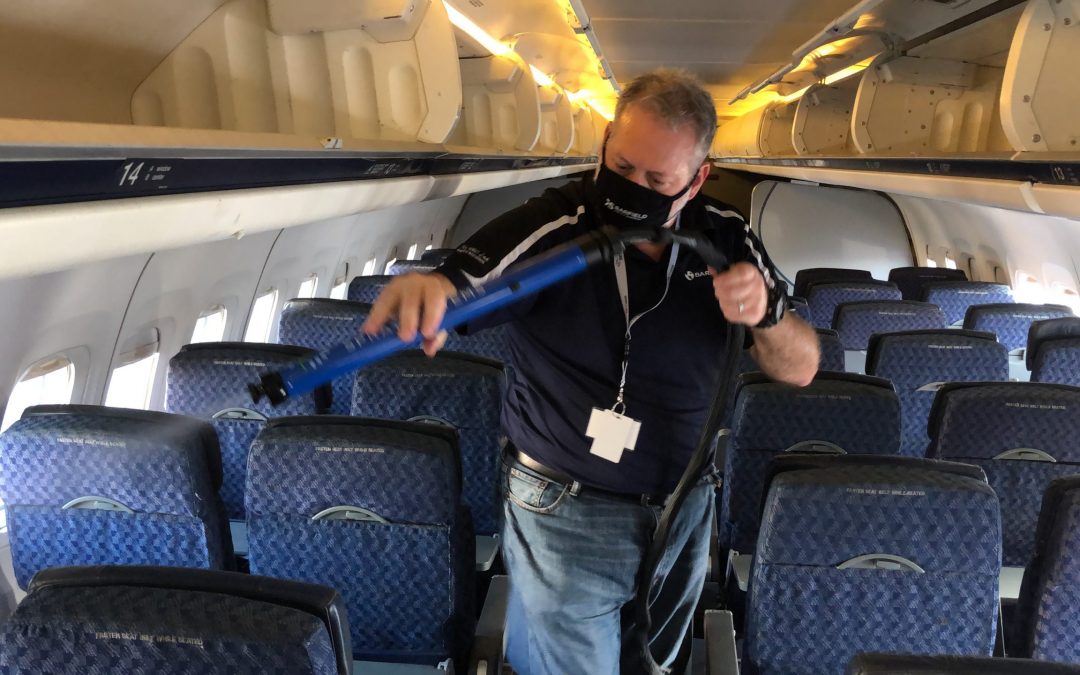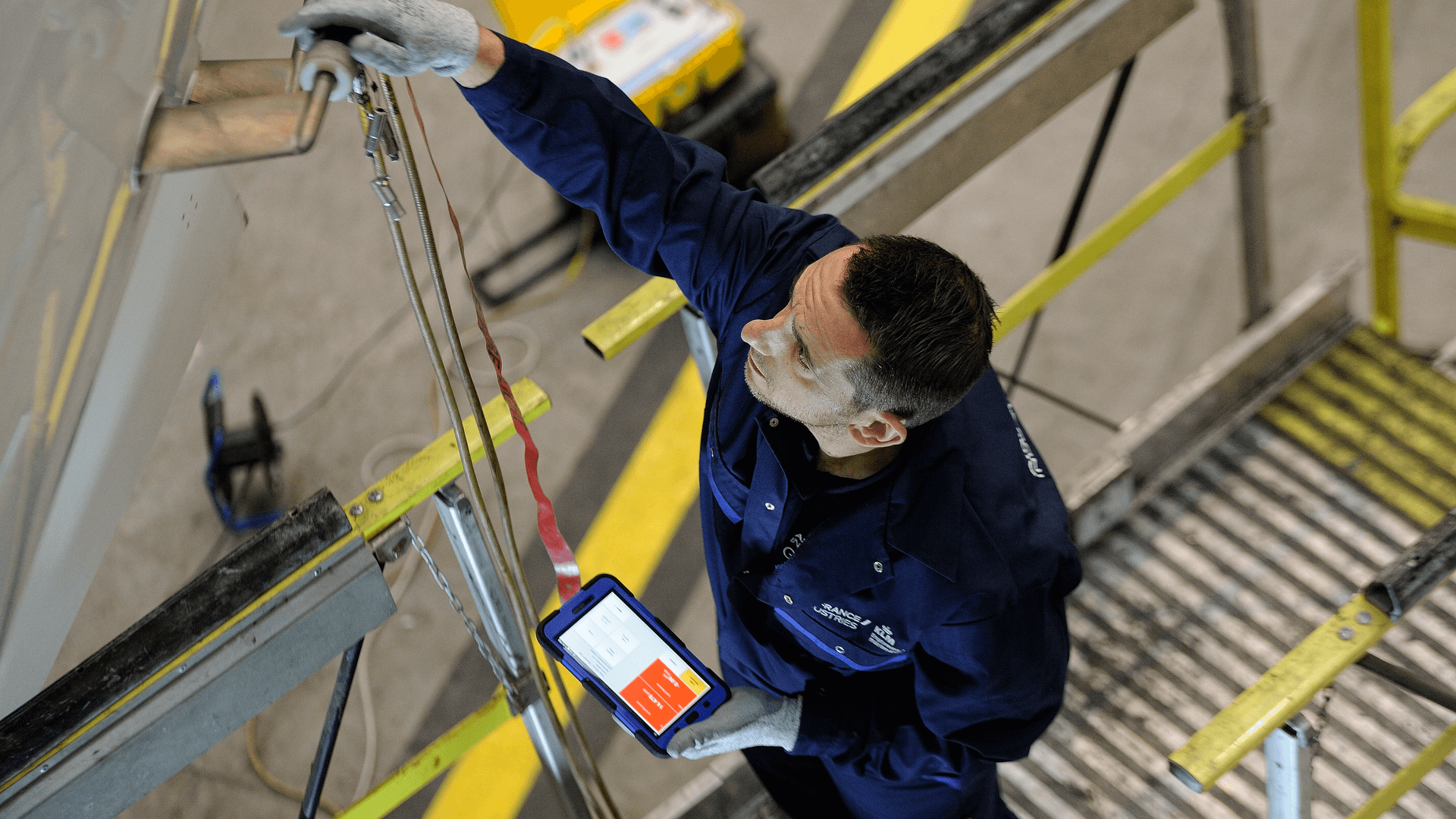Barfield Inc., in partnership with George T. Baker Aviation Technical College, tested the Electrostatic Sprayer Cart inside an aircraft.
Electrostatic sprayers are making in-roads into aviation operations as a way to disinfect, by using its wrap around technologies.
Electrostatic sprayer works with a combination of an air pump and an electrostatic charge. Thus, charging the disinfectant particles positively. Once sprayed the adhere to negative charged surfaces. Check the link How Electrostatic Sprayer Works? to learn more about the technology.
“We found that doing a row could take about 5 seconds, and covering a 737 could be around 10 to 15 minutes on average.”
What type of Electrostatic Sprayers Exist?
In the market, there are two types of sprayers each one with a different type of connectivity. Low power battery operated and Industrial Electrostatic Sprayers powered with AC current. The low power units have a small motor that pushes the air out. It creates more like a mist. This could work for small spaces.
The Industrial Electrostatic Sprayers, like the Electrostatic Sprayer Cart, uses a powerful air pump which allows for a wider spread of the disinfectant.


The Electrostatic Sprayer Cart is suitable for large areas, disinfecting in a very short period of time. It also uses less product, in comparison to a non-electrostatic unit.
Distance to objects with an Electrostatic Sprayer Cart unit varies between 3 to 6 feet, at a speed of 1 foot per second. As a result, we found that doing a row inside and aircraft could take about 3-5 seconds on average, and doing all the rows in a 737 could take around 10 to 15 minutes on average.
This video shows the work in this aircraft:



Recent Comments